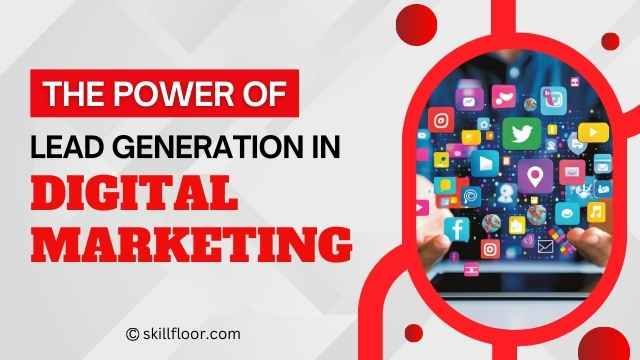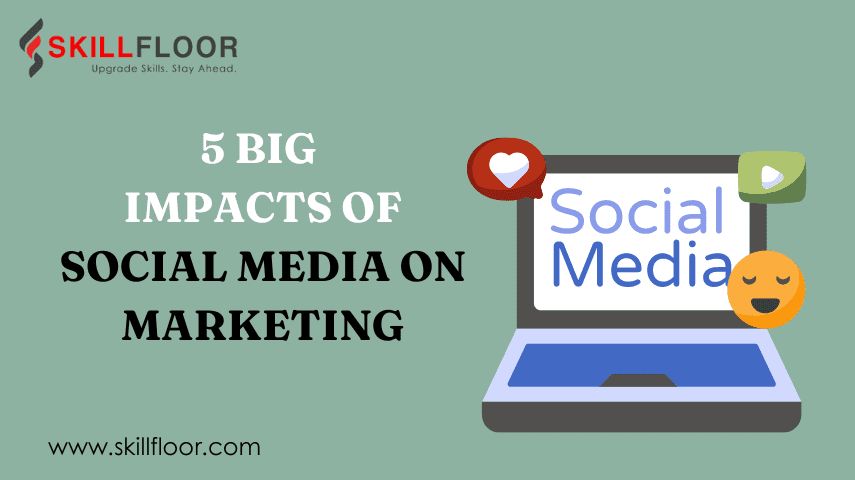What is Lead Generation in Digital Marketing
Boost your business with digital lead generation—attract, engage, and convert potential customers through targeted online marketing strategies.

I have worked in digital marketing for 3 years, and one of the most important things I focus on is lead generation. Suppose you're asking what is lead generation in digital marketing. In that case, it’s simply the process of attracting people interested in what you offer and getting their contact information, like an email or phone number so that you can follow up with them later. This can be done through ads, social media, blog posts, and other online methods.
In my experience, good lead generation isn’t just about reaching a lot of people, but about reaching the right people those who are truly interested in your product or service. It’s about making real connections that can turn into future customers. Here, I’ll explain what lead generation means, why it’s important, and how it fits into a successful digital marketing plan.
What is a Lead?
In digital marketing, a lead is a person who shows interest in your product or service. They usually share their contact details, like an email address, so you can reach out to them later. For example, someone might fill out a form on your website to get a free download or sign up for your newsletter. While they may not be ready to buy right away, they could become a customer in the future with the right follow-up.
Leads are important because they are the starting point for turning interest into actual sales. Once you have their contact info, you can build a relationship and help them become a customer.
Types of Leads
1. Marketing Qualified Leads (MQL)
MQLs show initial interest by engaging with your marketing, like downloading a guide or signing up for emails. They’re still in the early decision-making stage and need more nurturing.
-
Example: Downloading a free eBook.
2. Sales Qualified Leads (SQL)
SQLs are closer to buying, showing stronger interest by requesting a demo or pricing info. They are ready to speak with your sales team.
-
Example: Filling out a form for a product demo.
3. Information Qualified Leads (IQL)
IQLs are in the research phase, gathering information but not ready to decide. They need more time and education.
-
Example: Signing up for a webinar or downloading a research report.
4. Product Qualified Leads (PQL)
PQLs have tried your product, like a free trial, and are showing interest in purchasing after using it. They’re closer to buying.
-
Example: Signing up for a free software trial and using it regularly.
Definition of Lead Generation in Digital Marketing
Lead generation in digital marketing is the process of attracting people who are interested in your product or service and collecting their contact details, like their email or phone number. The goal is to connect with these potential customers (called "leads") so that you can build a relationship and eventually turn them into paying customers. For example, if someone visits your website and fills out a form to get a free guide or sign up for a newsletter, they become a lead.
Importance of Lead Generation for Businesses
Lead generation is very important for businesses because it helps them grow and get new customers.
-
Helps Grow Your Business: Regularly getting new leads gives your business a steady stream of potential customers. This helps your business grow over time as you have more chances to make sales.
-
Targets the Right People: With lead generation, you focus on people who are already interested in your products or services, so you're not wasting time and money on the wrong audience.
-
Boosts Sales and Revenue: The more leads you have, the more chances you have to turn those leads into customers, which increases your sales and profits.
-
Cost-Effective Marketing: Compared to traditional marketing methods, generating leads online is often cheaper and more targeted, which means better results for your investment.
-
Builds Brand Awareness: Even if leads don’t buy right away, they become familiar with your brand, which can lead to future sales as they trust your business more over time.
How Lead Generation Fits into Digital Marketing
Lead generation is a big part of digital marketing because it turns your online efforts into real business opportunities.
-
Attracting Visitors: Digital marketing strategies like SEO, social media, and content marketing bring people to your website or social media pages. This is the first step in generating leads.
-
Turning Visitors into Leads: Once people are on your site, lead generation techniques like landing pages, forms, and calls-to-action (CTAs) help you capture their contact information, turning visitors into leads.
-
Building Relationships with Leads: After you have their information, you can keep in touch with leads through emails, ads, or other personalized content, moving them closer to making a purchase.
-
Measuring and Improving: Digital tools let you see which lead generation strategies work best, allowing you to make adjustments and improve your results over time.
The Lead Generation Process
Lead generation is about attracting people who might be interested in your product or service, getting their contact information, and building a relationship with them to eventually turn them into customers.

Here’s how the process works step by step:
Step 1: Identifying Your Target Audience
The first step is to know who your ideal customers are. This is done by creating buyer personas, which are profiles that describe the type of people who are most likely to buy from you.
-
Understanding your ideal customers: A buyer persona includes details like your customers' age, location, job, and what problems they have that your product can solve. For example, if you sell fitness equipment, your target audience might be people who want to work out at home.
-
Using data to define your audience: You can use data from your website, social media, and customer feedback to understand what your audience needs and what problems they face. This helps you create marketing that speaks directly to them.
Step 2: Creating Valuable Content or Offers
Once you know who your audience is, the next step is to create valuable content or offers that attract them and get their attention.
-
Content creation for lead generation: You can create content like blog posts, videos, or infographics that solve your audience’s problems or answer their questions. For example, if your audience is small business owners, you could write a blog post about "How to Boost Your Sales with Social Media."
-
Offering value with lead magnets: A lead magnet is something you give away for free, like an eBook, discount, or free trial, in exchange for a visitor’s contact information. For example, offering a free eBook on "10 Tips for Better Marketing" can encourage people to share their email addresses with you.
Step 3: Capturing Lead Information
To turn visitors into leads, you need to gather their contact information, like their email addresses, using forms, landing pages, and calls-to-action (CTAs).
-
Using forms, landing pages, and CTAs: You can capture leads by placing forms on landing pages where people can fill in their information. A clear CTA, such as "Download Now" or "Get Your Free Trial," encourages visitors to take action and share their details.
-
Best practices for designing forms: Keep your forms simple and only ask for the most important details, like a name and email address. This makes it easier for people to sign up. Make sure your landing page clearly explains what they get in return for filling out the form.
Step 4: Nurturing Leads
Once you have someone’s contact information, you need to nurture the relationship to turn them into a paying customer over time.
-
Using email marketing and personalized content: You can send emails that provide helpful content based on what the lead is interested in. For example, if they downloaded an eBook about marketing, you can send follow-up emails with more marketing tips.
-
How nurturing turns leads into customers: Over time, as you send valuable information and build trust, leads are more likely to buy from you. Lead nurturing can include sending helpful articles, special offers, or invitations to webinars, guiding leads toward becoming paying customers.

Lead Generation Channels in Digital Marketing
In digital marketing, there are many ways to attract potential customers, called leads. Each method helps businesses bring in people who might be interested in their products or services. Here's how different channels contribute to Lead Generation in Digital Marketing.
Search Engine Marketing (SEM)
Search Engine Marketing (SEM) uses paid ads on platforms like Google and Bing to bring in leads. These ads appear when people search for certain keywords related to your business.
-
Using paid ads to generate leads: With tools like Google Ads, you can create ads that show up when people search for specific terms, like "best running shoes." This helps you target people already looking for what you sell, leading to more interested leads, which is crucial for Lead Generation in Digital Marketing.
-
Growing digital ad spending: In India, digital ad spending is expected to reach ₹28,249 crore by 2024, with a large part of this coming from paid search ads.
Search Engine Optimization (SEO)
Search Engine Optimization (SEO) involves improving your website so it ranks higher in search results, bringing in organic traffic without the need for paid ads.
-
Attracting leads with SEO: By using the right keywords and making your website user-friendly, you can appear at the top of search results. For example, if your website ranks for "best smartphones," people looking for smartphones will easily find you. SEO is a powerful strategy for Lead Generation in Digital Marketing.
-
SEO’s impact: In India, 80% of online shoppers use search engines to research products before making a purchase, making SEO a powerful way to generate free leads.
Social Media Marketing
Social Media Marketing involves using platforms like Facebook, Instagram, LinkedIn, and Twitter to generate leads by posting content or running ads.
-
Generating leads on social media: You can post engaging content like videos or articles to connect with your audience. You can also run paid ads to target people based on their interests and behavior. For example, you can run an Instagram ad offering a discount on your clothing store, helping with Lead Generation in Digital Marketing.
-
Social media growth: India has 467 million social media users as of 2023, and 52% of businesses in India use social media to generate leads.[Source: Statista]
Content Marketing
Content Marketing involves creating useful, engaging content like blog posts, videos, and infographics to attract potential leads.
-
Drawing leads with content: By creating helpful content, you can attract people looking for answers to their questions or solutions to their problems. For example, a company that sells kitchen gadgets could write a blog titled "5 Tools That Make Cooking Faster" to attract potential customers.
-
Building trust with content: Regularly publishing valuable content helps build trust with your audience. Companies that blog consistently generate 67% more leads than those that don’t, making Lead Generation in Digital Marketing through content a long-term strategy.
Email Marketing
Email Marketing involves building an email list and sending targeted messages to turn subscribers into leads.
-
Building email lists and sending campaigns: You can gather email addresses by offering free content like eBooks or discounts. Once you have a list, send personalized emails with helpful content or special offers to keep your subscribers engaged.
-
Personalization and segmentation: By dividing your email list into smaller groups based on interests, you can send emails that feel more personal. This helps improve engagement and lead conversion. 70% of marketers in India find email marketing to be highly effective in Lead Generation in Digital Marketing.
Pay-per-click (PPC) Advertising
Pay-per-click (PPC) Advertising allows you to run ads and only pay when someone clicks on them. These ads can run on platforms like Google or social media.
-
Generating leads through PPC: You can run PPC ads to target people searching for specific products or services. For example, a skincare company might target users searching for "best skincare products in India." PPC is cost-effective because you only pay when someone clicks your ad.
-
PPC popularity: Indian businesses spent ₹9,300 crore on online ads in 2023, showing that PPC is a widely used tool for driving targeted leads.
Affiliate and Referral Marketing
Affiliate Marketing involves partnering with other businesses or influencers who promote your products and earn a commission for each lead or sale they generate. Referral Marketing encourages existing customers to refer new leads in exchange for rewards or discounts.
-
Using affiliates and referrals to generate leads: Affiliates promote your products on their platforms, while referral programs reward customers who recommend your business to others. This is an affordable way to get new leads because you only pay when a lead or sale is made.
-
Affiliate growth: The affiliate marketing industry in India is expected to grow to ₹2,000 crore by 2025, making it a popular method for Lead Generation in Digital Marketing.
Landing Pages
A landing page is a webpage designed to convert visitors into leads by encouraging them to take action, like signing up for a free trial or downloading a guide.
-
Creating effective landing pages: A good landing page has a clear message, a strong offer, and a simple form for users to fill out. For example, a company offering a free eBook might create a landing page where visitors can enter their email in exchange for the eBook.
-
Improving conversions with landing pages: Companies that use optimized landing pages see a 50% higher conversion rate compared to other web pages, making them key for Lead Generation in Digital Marketing.
Lead Generation Tools and Techniques
Lead generation tools and techniques help businesses efficiently attract, capture, and nurture leads.
|
Category |
Description |
Examples |
Trends in India |
|
Lead Capture Tools |
Collect contact info via forms, pop-ups, and live chat. |
HubSpot, Google Forms, OptinMonster, Intercom |
45% of businesses use pop-ups/live chat, boosting leads by 30%. |
|
Creating and Managing Forms |
Creating and Managing Forms |
HubSpot, Google Forms, OptinMonster |
75% of businesses report increased lead capture using forms. |
|
Using Pop-ups and Live Chat |
Engage visitors with pop-ups/live chat to capture leads. |
OptinMonster (pop-ups), Intercom, Tawk.to (live chat) |
Companies see up to 30% more leads from pop-ups and live chat. |
|
CRM Systems |
Organize and nurture leads by tracking interactions and managing follow-ups |
Salesforce, HubSpot, Zoho CRM |
CRM adoption has led to a 50% increase in lead conversion rates. |
|
Managing and Nurturing Leads |
CRMs simplify lead management and personalized follow-ups. |
Salesforce |
91% of businesses using CRMs report better lead management. |
|
Lead Nurturing with CRMs |
Automate personalized nurturing based on the sales funnel stage. |
Salesforce, HubSpot |
CRMs have boosted lead conversion by 50%. |
|
Marketing Automation Tools |
Automate tasks like email follow-ups and lead scoring. |
Mailchimp, ActiveCampaign, HubSpot Marketing Hub |
60% of businesses use marketing automation, improving conversions by 20-30%. |
|
Automating Email Follow-Ups |
Automate emails based on lead behavior. |
Mailchimp |
80% of businesses using automated emails see higher engagement. |
|
Lead Scoring and Drip Campaigns |
Score leads and run automated drip campaigns to nurture leads. |
ActiveCampaign |
Lead scoring improves efficiency by 77%. |
Lead generation in digital marketing is the process of finding people who are interested in your product or service and turning them into potential customers. It's important for business growth because it helps you connect with the right audience, collect their contact details, and stay in touch with them. Using tools like online forms, CRM systems, and automated emails, businesses can easily capture leads and build relationships, which can eventually turn into sales. Lead generation is a key part of a successful marketing strategy.





























































